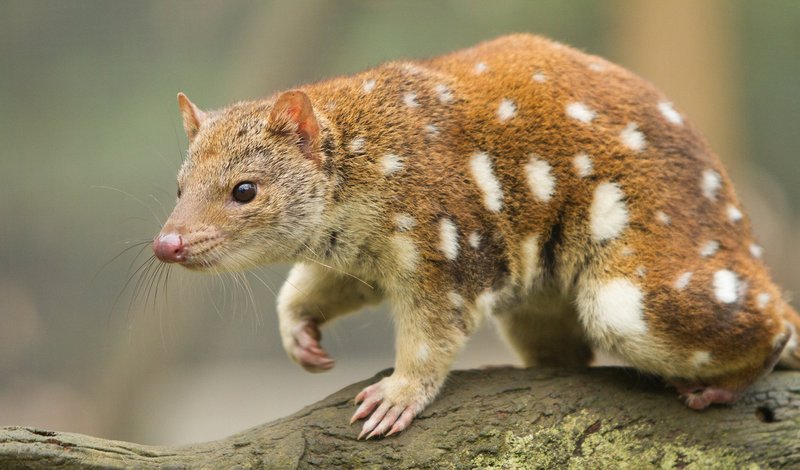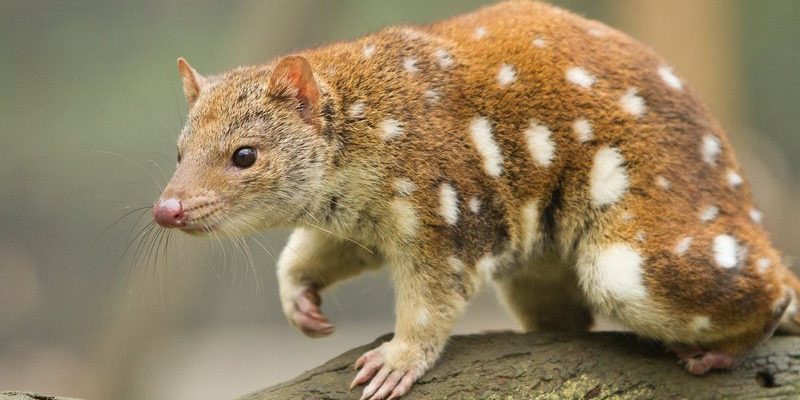
Quolls are fascinating little creatures, often overshadowed by their more well-known counterparts. Imagine a mix between a cat and a wild dog but with spots like a leopard—yep, that’s a quoll for you! They roam the forests, grasslands, and even rocky hills of Australia and New Guinea. By learning about their habitats, we can understand why these marsupials are crucial for maintaining ecological balance and why they need our help to thrive.
Understanding Quoll Habitats
Quolls are adaptable animals, but they do have specific preferences when it comes to their habitat. They thrive in both *wet* and *dry* regions, but there are some nuances to their living conditions. You might find them in dense forests, rugged mountain ranges, or even bushland. Each species of quoll tends to prefer different environments, which makes their distribution patterns quite interesting.
For instance, the Eastern quoll is commonly found in Tasmania and parts of southeastern Australia, enjoying the lush, moist forests. Meanwhile, the Spotted-tailed quoll prefers the more diverse range of habitats, from rainforests to temperate woodlands. So, whether they’re nestled in thick underbrush or darting between trees, quolls are masters of their environment.
Quoll Distribution Across Australia
Let’s talk geography. Australia is a vast continent, and quolls are spread throughout various regions. The *Eastern quoll*, for example, is mostly found in Tasmania, where it’s somewhat of a symbol of wildness. In contrast, the *Northern quoll* prefers the more arid, rocky terrains of northern Australia. Here’s the breakdown:
- Eastern Quoll: Found in Tasmania and parts of southeastern Australia.
- Spotted-Tailed Quoll: Distributed along the eastern coast and parts of southern Australia, thriving in bushland.
- Northern Quoll: Lives in the northern regions, often in rocky areas and savannas.
- Western Quoll: Once widespread, now mostly found in parts of southwestern Australia.
Each of these species has adapted to their environment in unique ways, making them fascinating subjects for wildlife enthusiasts.
The Role of Habitat in Quoll Survival
You might be wondering, why does habitat matter so much for quolls? Well, their survival and thriving populations directly depend on the availability and quality of their habitats. Quolls are skilled hunters, primarily feeding on insects, small mammals, and even birds. To catch their prey, they need ample cover and a suitable environment for hunting.
The destruction of their habitats, whether from urban development or agricultural expansion, is a significant concern. When forests are cleared, or landscapes are altered, quolls lose their homes and hunting grounds. This can lead to decreased quoll populations and even endanger certain species.
Preserving their natural habitats is essential for not only the quolls but also the ecosystems they help maintain. As they hunt, they control insect populations and help prevent overpopulation of smaller mammals.
Threats to Quoll Habitats
Unfortunately, quolls face several threats that impact their habitats and distribution. Here’s a look at some of the challenges they encounter:
- Habitat Loss: Urbanization, agriculture, and logging activities destroy quoll habitats, leaving them with nowhere to go.
- Invasive Species: Predators like cats and foxes threaten quolls, often competing for the same prey.
- Climate Change: Changes in climate patterns can affect food availability and create unsuitable living conditions for quolls.
Each of these threats can have dire consequences for quoll populations. Conservation efforts are essential to counteract these challenges and protect their habitats.
Conservation Efforts for Quolls
You might be thinking, “What can be done to help quolls?” That’s a great question! Several organizations and initiatives are actively working on conserving quolls and their habitats.
For example, there are habitat restoration projects aimed at replanting native vegetation and rehabilitating areas that have been damaged. Awareness campaigns educate the public about the importance of quolls and how to protect them. Some wildlife parks even have breeding programs to help boost populations of endangered quoll species.
By supporting these conservation efforts, we can help ensure that future generations get to enjoy these remarkable marsupials in their natural habitats.
Quolls are remarkable little creatures that play a vital role in Australia’s ecosystems. Understanding where they live and the challenges they face helps underscore the importance of protecting their habitats. Every quoll contributes to the delicate balance of their environments, so preserving their existence is crucial for the health of wildlife as a whole.
As we learn more about these fascinating marsupials, let’s not forget our responsibility to be stewards of the land they inhabit. By taking action, whether it’s through spreading awareness or supporting conservation initiatives, we can help quolls thrive in the wild for years to come. So, next time you think of Australia’s wildlife, don’t overlook these little spotted wonders!

